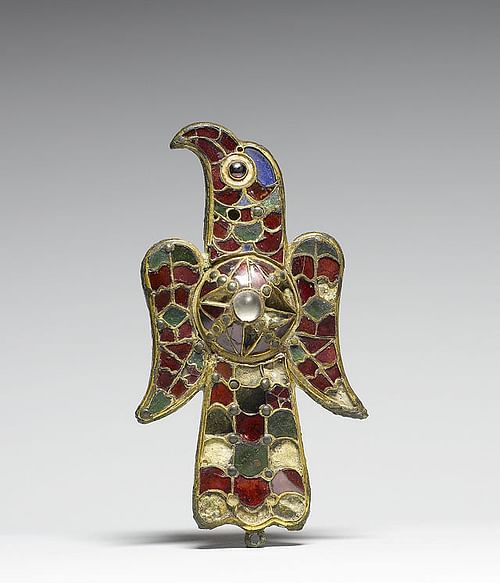
The Goths were a Germanic tribe who are frequently referenced for their part in the fall of the Roman Empire and their subsequent rise to power in the region of northern Europe, initially in Italy. Prior to their contact with Rome they must have had a long history but there is no written record of it.
They are first referenced by Herodotus as Scythians, but it should be noted that Herodotus was inclined to sweeping definitions of people whom he considered "barbarians" and perhaps designated the Goths as "Scythians" simply because they lived in the regions surrounding the Black Sea, traditionally Scythian territory.
Modern scholarship has rejected the identification of the Goths with the ancient Scythians. The primary source on Gothic history is Jordanes' work Getica (6th century), which presents a half-mythic version of the story of these people, and so his account is accepted carefully by some scholars and rejected completely by others. Jordanes' work was a distillation and summary of a much longer work, now lost, by Cassiodorus, a Roman official who served in the court of the Gothic king Theodoric the Great (c.454-526), and it is generally accepted that Cassiodorus invented much of his history to legitimize the reign of Theodoric by giving the Goths an illustrious past. Where the Goths originally came from is unknown.
In Roman history they first appear in Pliny the Elder's account (c. 75) of the explorer Pytheas' travels in northern Europe and his interaction with the people he called the Gutones, a Germanic tribe identified as the Goths (an identification further supported by the account of Ptolemy, a writer who lived shortly after Pliny). The Goths are given fairly extensive treatment in Tacitus' Germania (4-27), where they are described in detail, and they are further dealt with by later writers such as Ammianus Marcellinus (l.c. 330-c.391/400), who wrote a continuation of Tacitus' histories.
They were later defined by Cassiodorus and categorized as "Visigoths" (western Goths) and "Ostrogoths" (eastern Goths), but they did not originally refer to themselves by these designations. The claim that the Visigoths were originally ruled by a family named Balthi (or Balts) and the Ostrogoths by the illustrious Amal family seems to have some truth to it but is thought to have been embellished upon by Cassiodorus or, perhaps, Jordanes.
Possible Origin & Migration
Jordanes, who had a Gothic heritage, claims that the Goths came from Scandinavia, writing:
Now from this island of Scandza, as from a hive of races or a womb of nations, the Goths are said to have come forth long ago under their king, Berig by name. As soon as they disembarked from their ships and set foot on the land, they straightaway gave their name to the place. And even to-day it is said to be called Gothiscandzan. (57)
Historians such as Peter Heather have identified Gothiscandza with Gdansk in modern Poland, and this theory is generally supported by archaeological evidence, although it is not accepted by all scholars, most notably Michael Kulikowski. Kulikowski claims that, because Jordanes is the only source we have on early Gothic history and migration, and since much of Jordanes' work is suspect, the theory of migration from Scandinavia must be rejected.
Heather contends, however, that "there is still more than enough good-quality evidence to establish that Germanic migration from the north was a major factor in the strategic revolution of the third century" (114). He also maintains that this migration would have taken place centuries before the Goths came to play their pivotal role in the fall of Rome and development of northern Europe. Whether one accepts the Scandinavian origin of the Goths depends on how much faith one has in Jordanes' account and the interpretation of archaeological evidence.
Kulikowski argues that the claim for the Goths originating north of the Black Sea is a "text-hindered fantasy", meaning that archaeological evidence has been interpreted to fit Jordanes' account instead of being evaluated on its own merits (Heather, 113). This debate is on-going and, presently, no new evidence has come to light to fully substantiate one side or the other.
While it is probable that modern-day Gdansk is the ancient Gothiscandzan, it cannot be proven conclusively, even though the discovery in 1873 of over 3,000 Gothic tombs in Eastern Pomerania, Poland (dating between the 1st and 4th centuries) argues in favor of the claim. This find, the so-called Wielbark Culture (named for the Polish village where the tombs were discovered), is also subject to the same controversy addressed above, in that those historians who argue in favor of Jordanes' account claim vindication while, those who do not, argue that the site has simply been interpreted in light of the acceptance of Jordanes' work.
The historian Walter Goffart supports the view that one should not interpret archaeological evidence in the context of Jordanes' work because it is simply unreliable. In Goffart's view, there is no "history of the Goths" prior to their association with Rome and the accounts of them given by Roman writers. Goffart states:
A strictly controlled historical narrative presupposes a certain minimum of evidence, rather than a string of hypotheses and combinations; much as one might wish to write the ancient history of the Goths, the documentary basis for doing so is lacking. (8)
If they did migrate from north of the Black Sea to Eastern Europe then, at some point, they moved south to populate the region of Germania.
The Goths Prior to Engagements with Rome
The Roman historian Tacitus, who first encountered the Goths in Germany, described them as a cohesive race of Germanic people, indigenous to their land, who were fierce fighters. He writes:
I concur in opinion with those who deem the Germans never to have intermarried with other nations; but to be a race, pure, unmixed, and stamped with a distinct character. Hence a family likeness pervades the whole, though their numbers are so great: eyes stern and blue; ruddy hair; large bodies, powerful in sudden exertions, but impatient of toil and labor, least of all capable of sustaining thirst and heat. Cold and hunger they are accustomed by their climate and soil to endure.
Even iron is not plentiful among them; as may be inferred from the nature of their weapons. Swords or broad lances are seldom used; but they generally carry a spear, called in their language framea, which has an iron blade, short and narrow, but so sharp and manageable, that, as occasion requires, they employ it either in close or distant fighting.
This spear and a shield are all the armor of the cavalry. The foot have, besides, missile weapons, several to each man, which they hurl to an immense distance. They are either naked, or lightly covered with a small mantle; and have no pride in equipage: their shields only are ornamented with the choicest colors. Few are provided with a coat of mail and scarcely here and there one with a casque or helmet. Their horses are neither remarkable for beauty nor swiftness, nor are they taught the various evolutions practiced with us. The cavalry either bear down straight forwards, or wheel once to the right, in so compact a body that none is left behind the rest. Their principal strength, on the whole, consists in their infantry: hence in an engagement these are intermixed with the cavalry; so well accordant with the nature of equestrian combats is the agility of those foot soldiers, whom they select from the whole body of their youth, and place in the front of the line.
In the election of kings they have regard to birth; in that of generals, to valor. Their kings have not an absolute or unlimited power; and their generals command less through the force of authority, than of example. If they are daring, adventurous, and conspicuous in action, they procure obedience from the admiration they inspire.
The Germans transact no business, public or private, without being armed: but it is not customary for any person to assume arms till the state has approved his ability to use them.
In the field of battle, it is disgraceful for the chief to be surpassed in valor; it is disgraceful for the companions not to equal their chief; but it is reproach and infamy during a whole succeeding life to retreat from the field surviving him.
During the intervals of war, they pass their time less in hunting than in a sluggish repose, divided between sleep and the table. All the bravest of the warriors, committing the care of the house, the family affairs, and the lands, to the women, old men, and weaker part of the domestics, stupefy themselves in inaction. Their drink is a liquor prepared from barley or wheat brought by fermentation to a certain resemblance of wine. (Germania, selections from 4-23)
This description fits with later accounts of the Goths, but historians suggest caution in accepting that the later Goths were the same people as those Tacitus wrote of. Like the Alemanni tribe, the tribal identity of the Goths is thought to have undergone a transformation between the 1st century when Tacitus wrote and the 3rd and 4th centuries when many of the other accounts are given. Heather writes:
All the Germanic groups at the heart of the successor states to the Roman Empire in this era - Goths, Franks, Vandals, and so on - can be shown to be new political units, created on the march, many of them recruiting from a wide range of manpower sources, some of which were not even Germanic speaking. The political units formed by the Germani in the first millennium were thus not closed groups with continuous histories, but entities that could be created and destroyed, and which, in between, increased and decreased in size according to historical circumstance. (20)
Those Goths who would later be allied with or against the Huns, who fought for and against Rome, might not be the same people Tacitus describes but, unlike the Alemanni, there seems to be a greater probability that they were, as the later descriptions seem to match the earlier ones fairly closely. In religion, for example, the Goths described by Tacitus practiced the same kind of tribal, Nordic paganism that was later defended by Gothic kings such as Athanaric in the 4th century. The veneration of ancestors, an appreciation for nature and recognition of sacred natural sites, and tribal totems were as much a part of 1st century Gothic religion as it was for the later Goths until the coming of Christianity.
Language & Religion
The Gothic language is known through the missionary Ulfilas' translation of the Bible from Greek into Gothic c. 350. The language was Teutonic in nature but seems to have differed significantly from other Germanic languages spoken in the region. The Gothic Bible's translation is based on uncial Greek (a form of script which uses only capital letters), which Ulfilas drew from to create his Bible using Gothic runes. Whether the language had been written down before is unknown and, since no evidence survives except fragments of Ulfilas' Bible, this question cannot be answered. Most scholars believe, however, that Ulfilas was the first to make a written record of the spoken language.
Ulfilas' efforts, of course, were to further his missionary work among the Goths; efforts which were not appreciated by many Goths and, especially, the Goth leadership. The religion of the Goths prior to the coming of Christianity, as noted, was a Nordic paganism which emphasized the close presence of the spirits of the land, one's ancestors, and the primacy of the Norse gods.
Christianity presented a completely different view of the universe with a single God, high in the heavens, who had sent his son to earth to redeem human being's souls. As Christianity was seen as a "Roman religion", and a threat to the Goth's heritage and way of life, the Gothic leaders took measures to stop missionary work among their people; these measures usually took the form of brutal persecutions. Although the persecutions would turn Gothic families against each other, and may have played a significant role in the later Gothic Civil War, the Gothic authorities seem to have considered them worth the cost to keep at bay the influence of Rome.
The Goths & Rome
The first Gothic invasion of Rome took place in 238 when they attacked the city of Histia in modern-day Hungary, which had been part of the Roman Empire since 30. What drove the Goths to this invasion is not fully understood but, most probably, it was simply the weakness of the empire at that time that made provincial cities like Histia attractive targets for the Goths and other tribes because of the Roman's inability to respond with the military might they once had.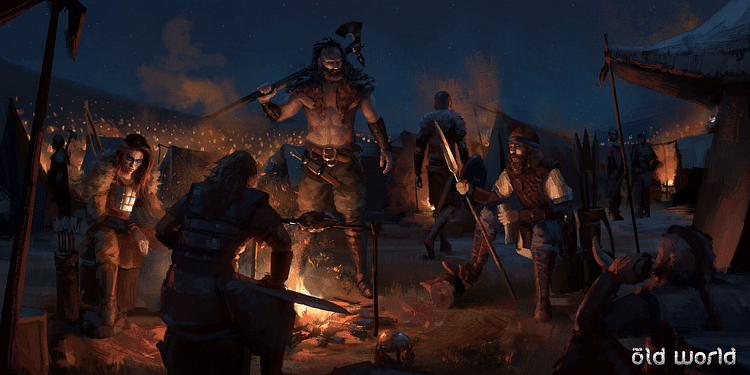
The Goths also raided the coastal regions and, with a newly-formed navy, practiced piracy. They maintained their control over the region until their defeat by the emperor Aurelian (270-275) in 270; an engagement in which the Goth king Cannabaudes (who was probably the same man as Cniva) was killed along with 5,000 of his men and the Goths were driven into Dacia.
At this point in their history, the Goths were regarded by the Romans as less than human and more as dangerous pests. The historian Herwig Wolfram describes the Roman view of "barbarians" in general and Goths in particular in the 3rd century thusly:
They are barbarians; their language does not sound human, more like stammering and mere noise. The barbarians also speak diverse languages all at once or side by side, for in their eyes language is no criterion of tribal membership. Under the assault of their horrible songs the classical meter of the ancient poet goes to pieces. Their religion is superstition, and though not actually pagan, it is hardly more than corrupted Christianity, heresy and worse. For barbarians can neither think nor act rationally; theological controversies are Greek to them. If a storm approaches, they fear the heavens are collapsing, give up any advantage they may have on the battlefield, and flee. At the same time, they are dominated by a horrible death wish: they actually look forward to dying. Even their women take part in battle. Barbarians are driven by evil spirits; they are possessed by demons who force them to commit the most terrible acts. Barbarians simply resemble animals more than they do human beings, concluded contemporaries, wondering whether barbarians shared in human nature at all. (6)
While the Goths may have been considered inferior beings by the Romans, that did not stop the Roman Army from recruiting them into its ranks. The Goths fought alongside the Romans in the Roman-Persian Wars and were involved in the Battle of Misiche in 244, which ended in a Roman defeat and raised Philip the Arab (244-249) to power in Rome. The accepted historical narrative of the Goths claims they then continuously made incursions into Roman territory, even while their kinsmen were fighting with the Roman forces, and finally contributed significantly to the fall of Rome. Recent scholarship, however, has challenged this view and, as Goffart writes:
According to the traditional schema, the Germanic peoples had been in motion since the third or first century B.C., engaging in periodic mass migrations that pressed northern tribes down upon earlier emigrants to the south with such increasingly disruptive force that the Roman frontier, which had impeded the migrant's progress for several centuries, was torn down around A.D. 400. The moving Germanic masses then surged forward and halted in imperial territory. Yet this final step turns out to be remarkably modest: those involved in it were a mere handful of peoples, each group numbering at the most in the low tens of thousands, and many of them - not all - were accommodated within the Roman provinces without dispossessing or overturning indigenous society. (4-5)
It is now thought that, between c. 238 and 400, while there certainly were clashes between the armies of Rome and those of the Goths (most notably the First Gothic War of 376-382), a sizeable portion of the population of the Roman Empire was Gothic and that these Goths had adopted the Roman way of life. A number of the engagements fought in the 1st Gothic War were the result of disputes over land agreements, promises made and broken, or mistreatment of the Goths by the Romans.
Prior to the invasion of 238, the Goths had lived along the Roman borders as neither friends nor enemies to Rome. After 244 there were Goths who lived as Romans, and many who served in the military, and there were those who continued to live where they used to and maintained their Gothic culture. Those who had settled close to the Roman borders, or in the provinces, separated themselves from those who remained in their ancestral regions and would, in time, be known as Visigoths from the name of the Roman military unit they served in, Visi-Vesi (though their original name was Thervingi), while those who remained where they had always lived were designated Ostrogoths (whose original name was Greuthungi).
These later names did not originate with the people themselves but were terms set down by Cassiodorus in the 6th century who claimed "Visigoth" meant "western Goths" and "Ostrogoth" referred to "eastern Goths". This is not to claim that there were no Ostrogoths serving in the Roman legions nor any Visigoths living in Germania. The two names seem to have been created for ease of reference to Gothic peoples who, generally, populated one area or another or fought for or against Rome.
Athanaric and Fritigern: The Gothic Civil War
A major division among the Thervingi Goths occurred with the Gothic Civil War of the early 370's fought between Athanaric and Fritigern. Wolfram writes, "the confused tradition [of records of this war] does not reveal the exact date" (70). Athanaric was king of the Goths (claimed by some sources as the first king) a position known as a reiks (pronounced "rix") which meant "judge". Ancient sources claim that, when he was younger, Athanaric had sworn a vow to his father never to trust the Romans and never to set foot on Roman soil.
Modern scholarship, while not discounting this possibility, speculates that perhaps in his role as judge he was prohibited from leaving the region of the Goths because he embodied the spirit of his people and could not de-value his position by traveling to another land (which, according to his beliefs, would have been under the guidance of other divinities) and leaving his people without a leader, even for a brief period.
Whatever his reasons, Athanaric was a sworn enemy of Rome, while Fritigern courted Rome's favor through his association with the emperor Valens. Further complicating the relationship between these two men was their difference in religion. Fritigern was an Arian Christian, while Athanaric maintained the traditional pagan beliefs of his people which, as judge, he was sworn to defend and so persecuted the Gothic Christians.
Their differences drew sharp lines between pagan Goths and Christian Goths, and they went to war. Athanaric defeated Fritigern in battle, and the latter appealed to Valens for help. The emperor, also an Arian Christian, came to Fritigern's aid and, according to some sources, it was at this point that Fritigern converted to Christianity as part of the agreement with Valens.
According to other sources, he was already a Christian who had been converted by the missionary efforts of Ulfilas the Goth (311-383), who was the primary missionary to introduce the new faith into the region of the Goths, a mission encouraged by the Romans who believed that uniting the Goths under Roman religious beliefs would "civilize" them and lessen the possibility of conflict. Fritigern may have converted, along with his followers, at Valens' request but, as the two were in contact prior to the recorded conversion in c. 376, Fritigern was most likely already a Christian, even if only in name.
Most likely, as Wolfram speculates, Fritigern saw an alliance with Valens as a quick path to admittance into the territories of the empire and settlement of his people in Roman Thrace and so made a public show of conversion to Arian Christianity at the emperor's request later on. Between 367-369 Valens engaged Athanaric in battle, but the Gothic leader consistently outmaneuvered the Romans, drawing them deeper and deeper into his territory where he could engage in guerilla warfare.
Although the sources do not report heavy losses on either side, these accounts (like many from the period) are often unreliable, and it is possible that Valens' army suffered more heavily than the Roman sources wished to admit. The Roman army continued to march and fight in formation against an enemy who knew the terrain and could strike without warning and vanish away into the forest. This kind of warfare would have been very de-moralizing to the troops and, had Athanaric been able to continue the war, he might have been victorious.
He was prevented from this, however, by the coming of the Huns. The Hunnic raids destroyed the Goth's food supplies and, with the lack of trade with Rome resulting in a shortage of food, Athanaric was compelled to seek terms of peace from Valens. The two leaders finally concluded a treaty, signed on a boat in the center of the Danube, so that Athanaric would not break his vow never to set foot on Roman soil and Valens would not compromise his status as an emperor of Rome by meeting the Gothic leader (a man he claimed to have defeated) on Gothic ground.
The treaty was only between Valens and those Goths under Athanaric's rule, as Fritigern was already an ally of Rome. This division among the Goths would only grow more pronounced in the next few decades with the invasion of the region by the Huns led by their king and chieftain, Attila.
Attila the Hun
It is popularly understood that the Goths were pushed into the regions of Rome by the Huns, and while this is true for the years c. 376-378, it is not an accurate portrayal of Goth-Roman relations in their entirety. There were many Goths, as already noted, living in Roman provinces and serving in the Roman army. The later king of the Visigoths, Alaric I (reigned 394-410), served Rome as a soldier before his ascent to power and eventual sack of Rome in 410. Alaric's decision to lay siege to the city came after his repeated requests to Rome for proper treatment of his people were ignored. Alaric's war on Rome exemplifies the tension that always existed between the Goths and the Romans. The Goths would fight for Rome but, too often, were still not considered on equal standing with Roman citizens.
Another "barbarian tribe" who was employed by the Roman army was the Huns. The Huns were a nomadic tribe who lived in the region known as the Caucasus (the border between Europe and Asia) and are first mentioned by Tacitus in his Fragments (7) as Hunnoi. They defeated another Germanic tribe, the Alans, and then proceeded against the Greuthungi (Ostrogoths) and subdued them.
They then launched attacks on the Thervingi (Visigoths) who fled across the borders of Rome. By 376 Fritigern had appealed to the Roman emperor Valens for asylum under the protection of Rome, which was granted, and the Goths under Fritigern crossed the Danube to settle in Roman territory. Poor treatment of these Goths by provincial administrators would result in their rebellion under Fritigern and the Battle of Adrianople (9 August 378) in which Valens would be killed and from which the empire never fully recovered. Many historians have traditionally cited the Battle of Adrianople as the true end of the Roman Empire and cite the Hun invasion, which drove the Goths into Rome, as a major contributing factor.
The Huns were a persistent threat to Rome, even though they often served as mercenaries in the Roman army, even after the rise of Attila to their supreme leader. However great a role Attila may have played in Rome's demise, it is certain he exerted a powerful influence on the future of the Goths. It is because of the early Hunnic raids into Gothic territory c. 376 that so many Goths crossed the Danube into Rome and provided the basis for the traditional view of a "Gothic Invasion" of the Roman Empire but it was due to Attila's campaigns that the Goths would be divided even further and, eventually, dispersed.
In 435 Attila and his brother Bleda negotiated the Treaty of Margus with Rome which was supposed to have kept the peace; they then swiftly broke the treaty and raided Roman territories. Once they had plundered numerous cities and slaughtered the inhabitants, they extorted enormous sums of money from Rome to keep them from doing so again.
When Bleda died in 444, Attila was the sole sovereign of the Huns and embarked on an almost continual harassment of the empire. He invaded the region of Moesia (the Balkans) in 446/447 and invaded both Gaul (in 451) and Italy (in 452) until he died in 453. The invasion of the Huns divided the Goths and Attila's war on Rome did so further with Ostrogoths primarily fighting for the Huns and Visigoths fighting against them. At the famous Battle of the Catauluanian Plains in 451 there were Goths, as well as Alemanni, fighting on both sides of the conflict.
Following Attila's death, the divided Goths kept their new separate identities. The king of Italy, Odoacer (433-493) may have been Visigoth, Ostrogoth, or some other Germanic ethnicity but, whatever he was, he provided a home for the primarily Visigothic soldiers under his command by appropriating one third of the land in Italy for them once he came to power.
The Ostrogoths who had fought under Attila either now joined the Roman forces or returned to their homeland where they would eventually come to serve under their king Theodoric the Great of the Ostrogoths (454-526). Theodoric assassinated Odoacer in 493 CE and became king of Italy. He was able to rule over a separate-but-equal kingdom of Romans and Goths until his death in 526.
After his death, the country erupted in turmoil which culminated in the 2nd Gothic War (535-554). During the latter part of this conflict, the Goths of Italy were led by the King of the Ostrogoths, Baduila (better known as Totila) who fought against the forces of the Eastern Roman Empire led by the general Belisarius. Totila was defeated at the Battle of Taginae in 552 at which he was mortally wounded. After his death, the Goths continued their fight for independence from Rome until they were completely defeated in 553 at the Battle of Mons Lactarius.
By 554 their cause was lost and the Goths began to disperse into the regions of northern Europe (present day Italy, France, and Spain) and, by 562, the name "Ostrogoth" was virtually unknown and the kingdom of the Visigoths had become that of the Franks. Their names exist in the present day only in the histories.
Legacy
The historian Herwig Wolfram writes:
Anyone in the field of Gothic history must expect to be misunderstood, rejected, even stigmatized. This is hardly surprising, for the subject is burdened with the ideological weight of a readiness throughout the centuries either to reject the Goths as an embodiment of everything wicked and evil or to identify with them and their glorious history. (1)
Wolfram points out that no other nationality, such as the Celts, seems to carry as much emotional and historical baggage as the Goths. They are either traditionally blamed for the destruction of the civilization of the Roman Empire that plunged western culture into a "dark age" or as heroes who refused to bear the yoke of Rome submissively (best exemplified in the figures of Athanaric, Fritigern, Alaric I, and Totila). It is entirely possible, however, to see the Goths as both these entities. Recent scholarship presents a view of the Goths which is more balanced than the either-or view, which has defined them for so long. The historian Philip Matyszak writes:
Until recently it was automatically assumed that Roman civilization was a Good Thing. Rome carried the torch of civilization into the barbarian darkness, and after the unpleasantness of conquest, Rome brought law, architecture, literature and similar benefits to the conquered peoples…There is now an alternative view, which suggests that Rome became the only civilization in the Mediterranean area by destroying half a dozen others. Some of these civilizations were as advanced as Rome's, or even more so. Others were developing, and the form they might have finally taken is now lost forever. (9)
Since histories have relied primarily on Roman sources to present the history of the Goths, these people are frequently equated with the concept of the "uncivilized barbarian" or the "noble savage". In fact, they were neither. As Wolfram points out, their history cannot be claimed as that of the ancient German people nor of the Slavic people nor of any people presently living (74-75).
The Goths entered history at a pivotal moment in the decline of the Roman Empire and played their part in that drama. With the empire gone, they ruled over two great kingdoms: one of Odoacer and Theodoric the Great in Italy, and the other in France (that of Theodoric I). In Totila, the last great king of the Ostrogoths, they produced one of the most brilliant military leaders in history, a match for the legendary Belisarius of Rome, known as the "Last of the Romans'. With Belisarius' victory, the history of the Goths ends.
It is therefore difficult at first to determine exactly what the legacy of the Goths is to the modern-day world until one realizes that, without them, there would not be one. The kingdom of Odoacer preserved the best aspects of the Roman Empire and that of Theodoric the Great maintained that preservation. Western civilization continued after the fall of Rome, an entity that was disintegrating daily and would have fallen anyway even if the Goths had never set a single boot on Roman soil; it was the Goths who preserved the light of western civilization, even as they helped to topple the empire that had given rise to it.
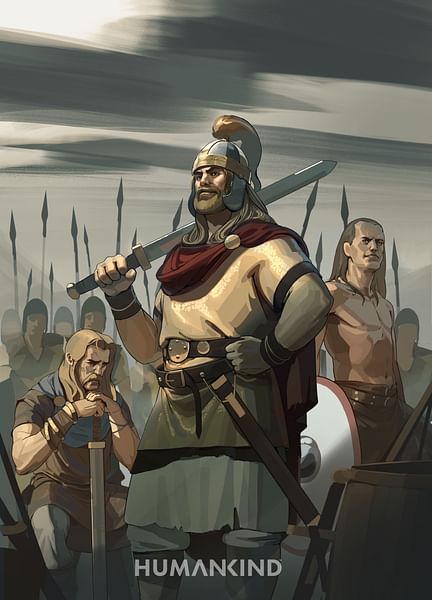
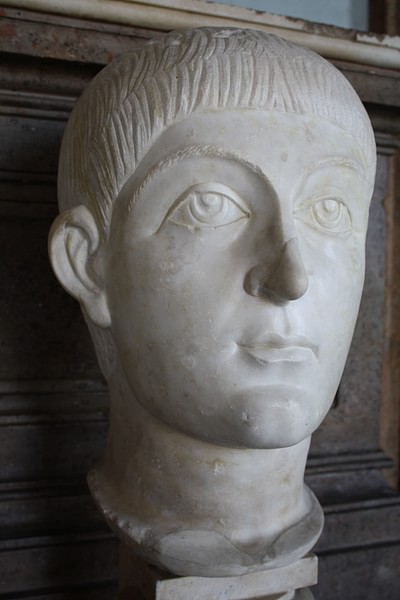
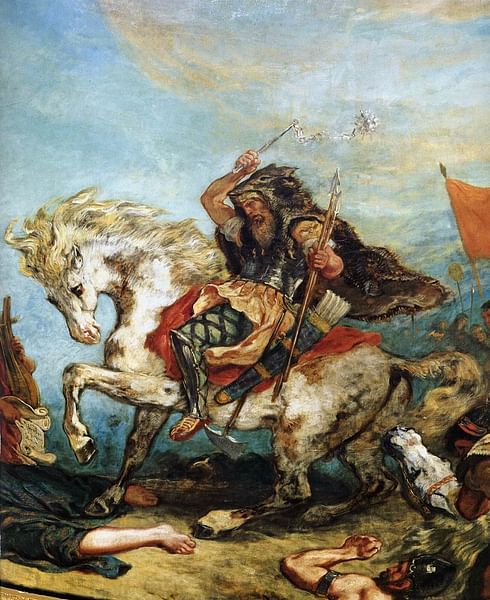
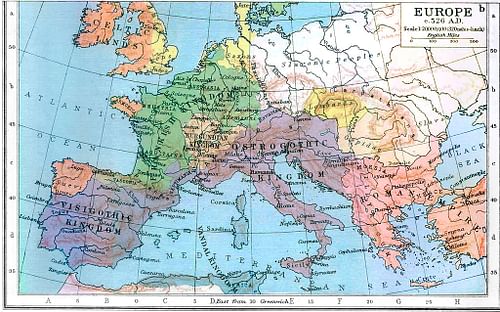

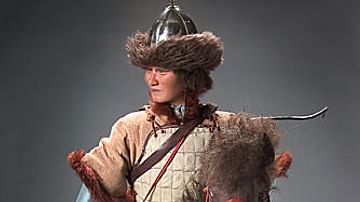
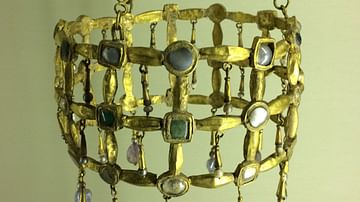
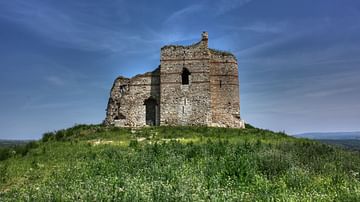
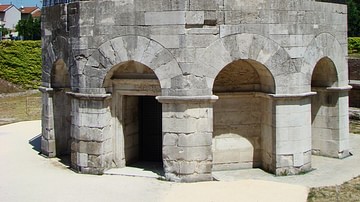
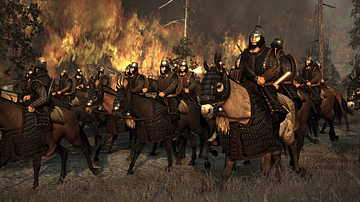

![Gothic History of Jordanes by Jordanes. (Evolution Publishing,2006) [Paperback]](https://m.media-amazon.com/images/I/51NcJhSFSXL._SL160_.jpg)


